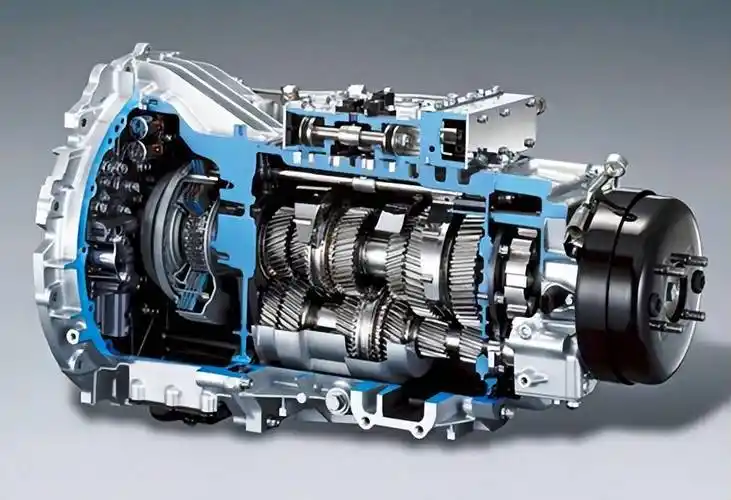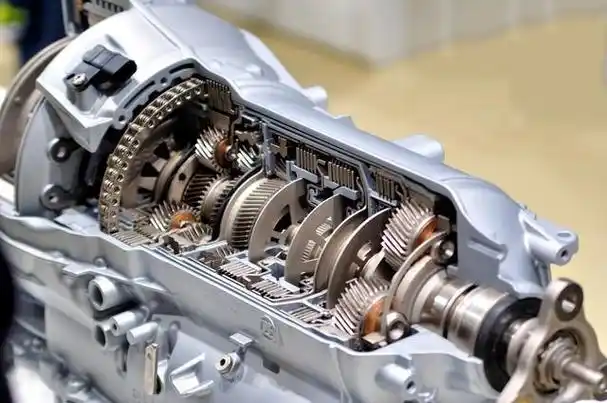As an important part of modern cars, the gearbox plays a vital role in improving driving experience and optimizing fuel economy. Whether it is a manual gearbox or an automatic gearbox, the working principle and application technology of the gearbox are constantly improving with the continuous development of automobile technology. This article will explore the working principle and application technology of the gearbox.
How a gearbox works
The main function of a gearbox is to adjust the speed and torque of the output shaft according to the engine speed and load changes, so that the car can accelerate and decelerate smoothly and obtain the best power performance in different driving environments. The gearbox changes the output characteristics of the engine through different gear combinations.
Gear transmission principle
The core component of the gearbox is the gear set, which achieves different transmission ratios through gear combinations of different sizes and shapes. The basic principle of gear transmission is that the engine transmits power to the input shaft of the gearbox through a clutch or torque converter, and then transmits it to the output shaft through different gear ratios, and finally drives the wheels of the car.
How a manual gearbox works
A manual gearbox disconnects the connection between the engine and the gearbox by the driver operating the clutch pedal, and then shifts gears. The driver selects different gears through the shift lever to adjust the vehicle speed and torque. The advantages of a manual gearbox are simple operation, low cost, and more direct driving feedback.
How an automatic gearbox works
An automatic gearbox achieves gear shifting through an automatic control system without manual operation by the driver. It replaces the clutch with a torque converter, uses multiple planetary gear sets to change the transmission ratio, and adjusts the shift timing through an electronic control unit (ECU). Common automatic transmissions include traditional hydraulic automatic transmissions, continuously variable transmissions (CVT), dual clutch transmissions (DCT), etc.

CVT (Continuously Variable Transmission)
The continuously variable transmission uses a pair of speed belts and an adjustable pulley system to provide an infinitely variable transmission ratio, allowing the engine to always stay in the optimal speed range. CVT transmissions generally provide a smoother acceleration experience and have better fuel economy.
DCT (Dual Clutch Transmission)
The dual clutch transmission uses two sets of clutches to control odd and even gears respectively, which can quickly and smoothly complete the gear shifting with almost no power interruption during gear shifting. DCT transmissions not only improve gear shifting efficiency, but also optimize the driving experience, and are widely used in high-performance and sports cars.
Application technology of gearbox
Intelligent and electronic gearbox
With the continuous development of automotive electronic technology, gearboxes have gradually realized intelligent control. For example, automatic gearboxes use sensors and electronic control units (ECUs) to monitor the engine speed, load and vehicle driving status in real time, and automatically adjust the shifting timing to improve fuel efficiency and driving comfort. In addition, the intelligence of the gearbox is also reflected in the ability to make adaptive adjustments based on the driver’s driving habits.
Performance improvement of dual-clutch transmission
Dual-clutch transmission (DCT) is widely used in high-performance cars and racing cars due to its efficient shifting ability. In recent years, with the continuous advancement of clutch technology and electronic control systems, the shifting speed and smoothness of DCT transmissions have been further improved, greatly improving the driving experience.

Combination of transmission and new energy vehicles
In new energy vehicles (especially electric vehicles), the role of the transmission has changed. Due to the characteristics of electric motors, the transmission of electric vehicles usually adopts a simplified design, and even does not require traditional multi-speed shifting. Some high-end electric vehicles are still equipped with multi-speed transmissions to achieve better acceleration performance and energy efficiency.
Energy-saving and environmental protection technology of gearbox
As part of the power transmission system, the gearbox plays a vital role in the fuel economy and emission control of the car. By optimizing gear design, improving shifting strategies and adopting efficient transmission systems, modern gearboxes can better cooperate with the engine, reduce energy loss, improve fuel efficiency, and thus reduce the carbon dioxide emissions of the car.
Future development of intelligent gearbox
As autonomous driving technology gradually matures, intelligent gearboxes will be more widely used in the future. Through deep integration with on-board computers, sensors and artificial intelligence systems, intelligent gearboxes will be able to more accurately predict the needs of drivers and automatically adjust shifting strategies, thereby further improving the driving experience and safety of the car.
Conclusion
As one of the important parts of automobiles, the gearbox has undergone many years of technological innovation and development. From traditional manual gearboxes to modern automatic gearboxes, gearbox technology is constantly improving in terms of driving performance, comfort and fuel economy. With the promotion of the trend of intelligence, electrification and high efficiency, the future gearbox technology will be more diversified and intelligent, able to meet different driving needs and help the sustainable development of the automotive industry.


